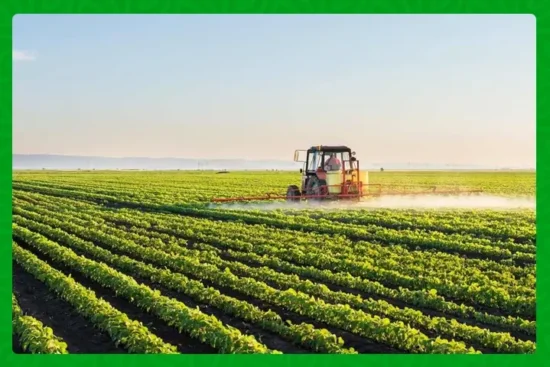
Malawi has taken a decisive step to turn its poultry sector from an under-exploited asset into a reliable engine for jobs, nutrition, and export earnings. The Government of Malawi, the Alliance for a Green Revolution in Africa (AGRA), and the Poultry Industry Association of Malawi (PIAM) have launched the Poultry Delivery Lab, a practical, results-focused initiative designed to tackle the real constraints that hold back chicken production and market competitiveness.
From workshop to action
Held in Lilongwe as a two-day convening of policymakers, investors, feed millers, processors and producers, the Delivery Lab was intentionally structured to move beyond discussion and toward implementable reforms. Officials described the Lab as a place to design a policy roadmap, agree on accountability measures, and line up investments that can be measured and scaled. AGRA’s convening role and PIAM’s private sector voice aim to keep the work practical and focused on delivery.
Why poultry matters for Malawi
Poultry is one of the fastest ways to put protein on tables and cash in pockets. The sector sits at the intersection of nutrition, smallholder livelihoods and agroindustry. A recent analysis shows that, with targeted reforms, production could jump substantially by 2030, connecting hundreds of thousands of smallholders to structured value chains and lifting incomes in rural areas. That is the kind of multiplier effect policymakers want to capture.
The snapshot: demand, production and the gap
Malawians already eat more chicken than many neighbors, but the country still underperforms on per capita consumption compared with nutritional recommendations. Current studies estimate the average Malawian consumes about 3.16 kilograms of chicken a year. At the same time the sector’s output in 2024 is estimated at around 83,000 tonnes with a realistic pathway to roughly 130,000 tonnes by 2030, if the right policies and investments are implemented. That gap between potential and reality is where policy and investment can make a quick, visible difference.
The single biggest barrier: feed cost
Feed accounts for the lion’s share of production costs. Multiple analyses put feed at roughly three quarters of total expenses, a figure that explains why producers often struggle to turn a profit and why retail chicken can be expensive for many households. Feed price volatility stems from maize and soybean market problems, taxation and logistics. The Delivery Lab is therefore prioritising reforms that will stabilise and reduce feed costs to make local poultry viable at scale.
What the Delivery Lab is prioritising
The initiative focuses on five practical outcomes to restructure the sector:
- Create a shared national vision for a competitive poultry industry.
- Draft a clear policy and investment roadmap that targets feed, finance, and trade.
- Put in place accountability and monitoring frameworks to track progress.
- Strengthen public private collaboration so reforms are market oriented.
- Unlock investments in production efficiency and trade facilitation so local producers can compete regionally.
Policy conversations at the Lab included reviewing taxes on soybean cake, looking at farm gate pricing, and designing export friendly measures. These specific levers are important because they go straight to producers’ margins and to regional competitiveness.
What success looks like on the ground
Success will be measurable. Short term, it will show as more affordable feed rations, functioning cold chains, and clearer export procedures. Medium term, the country should see higher flock productivity, lower retail prices, and stronger linkages between smallholders and processors. Long term, Malawi could become a regional supplier into nearby markets such as Mozambique that currently import large quantities of poultry. That would expand demand for locally produced maize and soybeans and create jobs across the supply chain.
Risks to manage
Improving poultry without shoring up the foundations will leave gains fragile. Key risks include:
• Feed supply and price volatility.
• Weak veterinary services and farm extension.
• Limited cold chain and processing capacity.
• Policies that unintentionally favour large producers at the expense of smallholders.
Mitigating these risks means embedding smallholder inclusion into policies, investing in feed value chains, expanding veterinary access, and ensuring finance reaches entry level producers.
A practical recipe to restructure poultry
To deliver transformation at scale, the Delivery Lab should help implement these priority actions:
• Remove or reform taxes that inflate feed costs and make local feed production viable.
• Invest in local soybean and maize production with incentives for commercialization.
• Scale community level feed formulation and storage so smallholders lower input costs.
• Expand artificial incubation and hatchery services to improve chick quality.
• Strengthen veterinary extension and biosecurity for healthier flocks.
• Design export protocols and trade facilitation so processors can reach regional markets.
When combined, these measures create a virtuous cycle: cheaper feeds mean more profitable farms, which attract investment into processing and logistics, which in turn opens export markets and creates demand for more locally grown feed ingredients.
Why this moment feels different
The Delivery Lab is not a single policy paper. It is a compact of government, private sector and development partners committed to targets, timelines and investments. That delivery orientation is what makes this moment promising. If the Lab moves from planning into financed projects and clear milestones, Malawi’s poultry sector could shift from a supply constrained market to a growth corridor for rural transformation.
Stay updated with the latest farming tips and agriculture industry news from Africa by subscribing to our newsletter. Don’t miss out on valuable insights and updates. Follow us on Twitter, LinkedIn, and Facebook to join our farming community and stay connected with us.


















